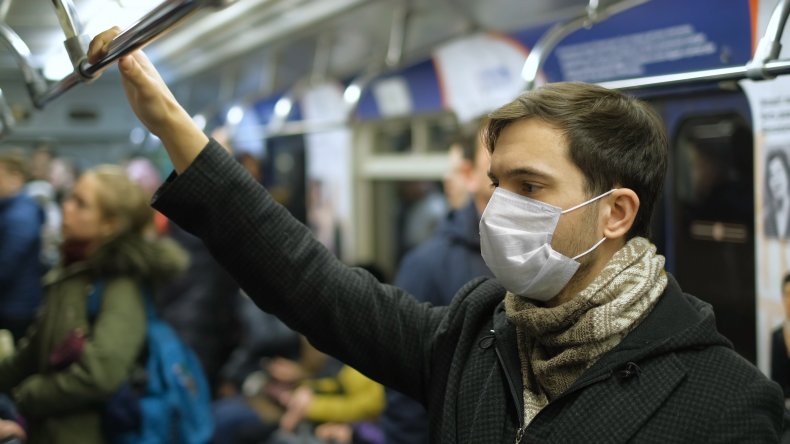Face masks played a key role in preventing the spread of coronavirus. In many countries, wearing them was mandatory and is still common practice across the globe.
Now, there is another virus making headlines: monkeypox.
Monkeypox is a rare viral infection, usually only recorded in areas of western and central Africa. In recent weeks however more than 1,000 cases have been recorded across 29 countries, according to Centers for Disease Control and Prevention (CDC) data.
For most people the virus is not dangerous—most make a full recovery. However as the world emerges from the worst of the coronavirus pandemic, discussions are circulating as to how best to prevent its spread.
iStock / Getty Images
Monkeypox and coronavirus are very different, and most media coverage on monkeypox centers on only caught through direct contact—although it requires more research, there is indication that it is spread through sex and other close contact.
However the CDC has recently updated its guidance on virus, including recommendations for those infected to wear masks. This presents a question that has not yet been widely touched on: can monkeypox be airborne too? And if so, can wearing masks prevent it from spreading?
How Airborne Is It?
Airborne transmission occurs when a virus travels through the air, in the form of small respiratory droplets caused by coughing or sneezing.
Most monkeypox cases can be traced back to a patient having direct, close contact with an infected person or animal. However in some circumstances this has not been the case—meaning the transmission must have been airborne.
In a 2017 study during an outbreak in Nigeria, scientists found that two health care workers had become infected with the virus while having no contact with the patients they were treating. In these cases, it is likely that masks could have prevented transmission.
Since the most recent outbreak, scientists have stressed that not enough is known about the virus to determine how exactly it is transmitted. While it appears it can be airborne, scientists believe it still cannot be sustained over large distances.

sibway/Getty
Should I Wear a Mask?
The CDC has recently updated its guidance on masks and monkeypox. It issued an update advising travelers to wear a mask to protect themselves in countries where monkeypox has been detected. However, the New York Times reported that it then took this guidance out, stating that it “caused confusion.”
However the CDC still advises that those infected with monkeypox to wear a surgical mask, “especially those who have respiratory symptoms” such as a cough, sore throat or shortness of breath.
The CDC also advises that if this is “not feasible,” other household members should wear a mask to protect themselves. At this stage, it also advises health care workers to protect themselves with a mask.
The New York City Department of health and mental hygiene also issued a statement last month, stating that “masks can protect against monkeypox, as well as other viruses circulating” the city, and advises people to wear them in most public settings.
However there have so far been no recommendations for the general public to wear a mask specifically to prevent the spread of monkeypox. Most mask guidelines remain in place due to COVID-19, which is spread through the air far more easily.
Update 06/08/22, 6:29 a.m. ET: This article was updated to include a picture.